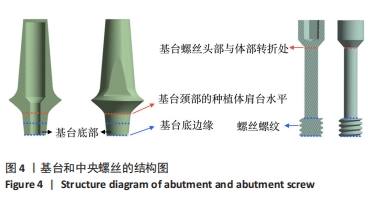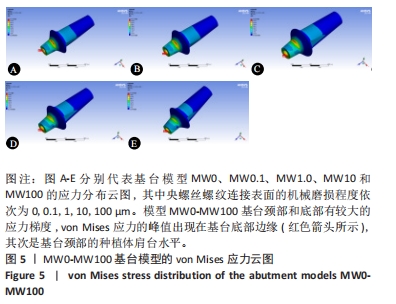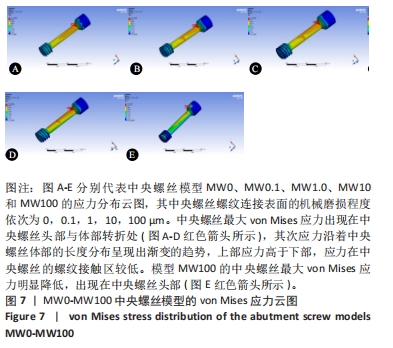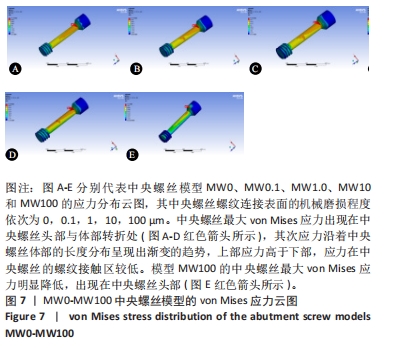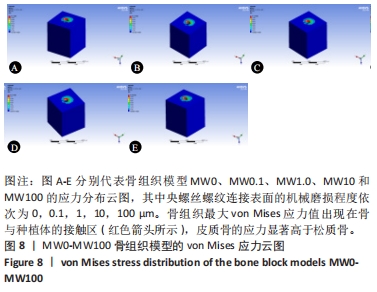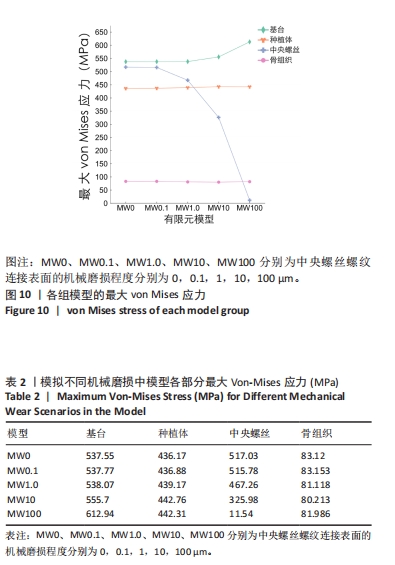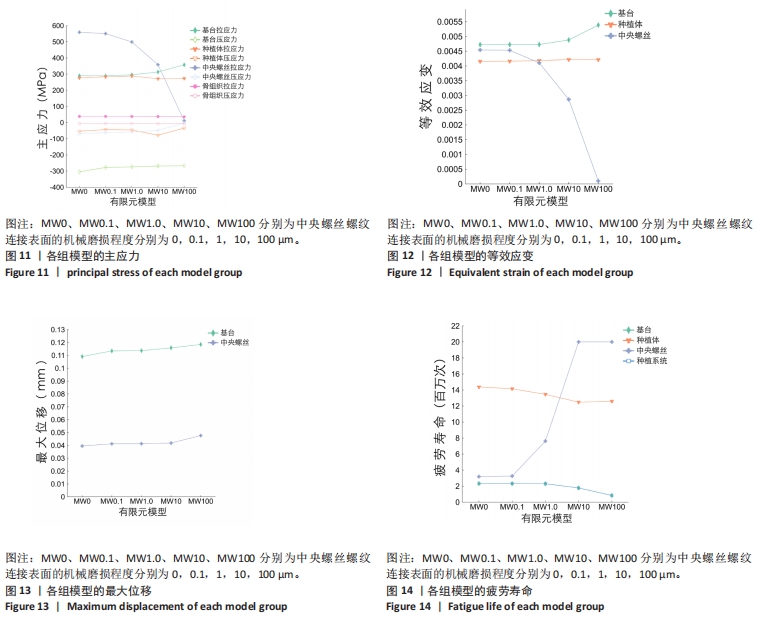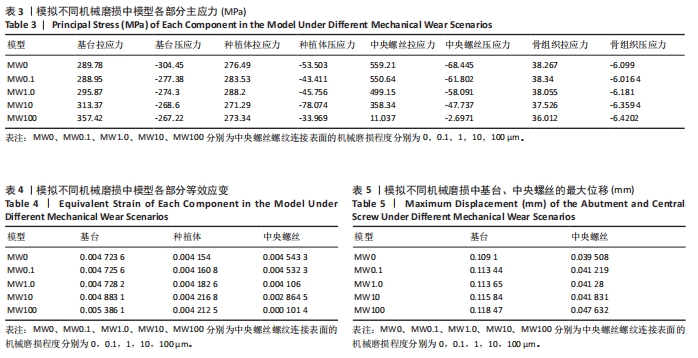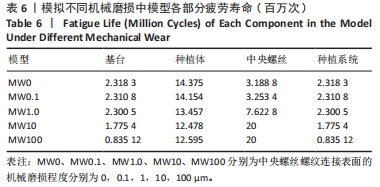中国组织工程研究 ›› 2025, Vol. 29 ›› Issue (在线): 1-9.
• •
中央螺丝机械磨损对莫氏锥度种植系统力学影响的三维有限元分析
许 浩1,2,丁 璐2,李 潇1,2
- 1南方医科大学口腔医学院,广东省广州市 510515;2南部战区总医院口腔科,广东省广州市 510010
Investigating the effect of the mechanical wear on abutment screw in Morse taper connection implant implant system by using finite element analysis
Xu Hao1,2, Ding Lu2, Li Xiao1,2
- 1School of Stomatology, Southern Medical University,Guangzhou 510515,Guangdong Province, China; 2Department of Stomatology,General Hospital of Southern Theater Command,Guangzhou 510010,Guangdong Province, China
摘要:
文题释义:
中央螺丝的机械磨损:种植系统中连接种植体与基台的中央螺丝在长期使用中,因咬合力、摩擦、应力集中及疲劳等作用,可能导致种植系统表面或内部结构发生材料损失、磨耗或破坏等现象,这不仅削弱螺丝的结构完整性,还可能进一步影响种植系统的长期稳定性。
三维有限元分析:一种数值分析方法,通过将复杂三维结构离散为有限元素,用数学方程模拟在外部载荷下的应力、应变和位移分布,广泛应用于工程、生物力学等领域,可用于预测力学行为与优化设计。
背景:中央螺丝松动是口腔种植修复中最常见的机械并发症之一,机械磨损作为螺纹松动的潜在原因,对力学性能及长期稳定性的影响值得关注。然而,目前针对中央螺丝螺纹机械磨损的力学研究仍较少,尚无定论。
目的:探讨动态载荷下种植体与中央螺丝连接处不同程度的机械磨损对莫氏锥度种植系统空间应力分布的影响,以期为种植体临床长期稳定性的评估提供理论依据。方法:通过SolidWorks软件建立中央螺丝螺纹磨损程度分别为0,0.1,1,10,100 μm的莫氏锥度种植体三维有限元模型,使用Ansys Workbench软件进行模拟分析。将种植体模型分别植入人工骨块中(模拟Ⅱ类骨质,骨块外层皮质骨厚度为2 mm,内为松质骨),在基台重心处施加颊舌向300 N的交替载荷(与种植体长轴线形成30°角),分析5组模型的基台、中央螺丝、种植体及骨组织的von Mises应力、主应力、位移和疲劳寿命等数据。
结果与结论:①随着中央螺丝螺纹的机械磨损程度增大,种植体与基台的von Mises应力、主应力及应变也随之增大,模型的应力集中于种植体顶部、基台颈部种植体肩台水平和基台底部边缘;②当中等磨损条件下(≥10 μm),种植系统疲劳寿命降低30%,中央螺丝的最大von Mises应力减少37%,此时中央螺丝的应力仍主要集中于中央螺丝头部与体部转折处;③在显著磨损条件下(≥100 μm),中央螺丝的von Mises应力下降98%,此时应力集中至螺丝头部,且种植体系统疲劳寿命降低63%;④当中央螺丝的螺纹磨损程度≥10 μm时,螺丝的松动风险明显增加,种植系统的疲劳寿命显著下降,临床上需加以重视。
中图分类号:
